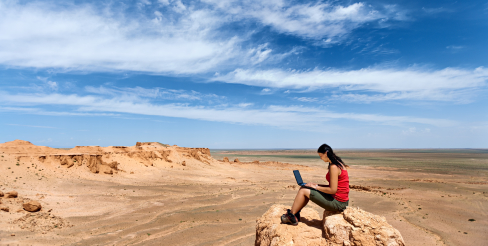On a recent Facebook thread, friends asked about different nuances of how I approach getting things done. Another friend asked about how I relax and then get going again. At first glance, those two topics don’t seem to relate to each other. But after some thought, I think they’re absolutely connected.
Here’s a few of my best tips, Q&A style.
1. How do I separate my work and home life and still get things done?
After many years of trying, I gave up on this. In fact, I don’t even strive for balance in the traditional work-life sense. For me, knowing my priorities and preferences, and then doing my best to integrate them has been a more successful strategy. I recognize that this can be difficult in some work environments, and I try hard to avoid them. In general, I think most of those limitations are self-imposed. I’ve found that most people are willing to offer flexibility as long as the results and communication are sufficient. Transparency is also important. I can’t pretend to have a “normal” life. I have to admit that I’m different and be willing to accept the consequences of that – both the benefits and the challenges.
So, to me, a day is a day. There’s not much difference between a Saturday and a Monday. I aim for a period of physical activity, connecting with my family/friends, generating value on work projects, and learning. The ratios of each of those change depending on the needs of each situation. Some days may be mostly about a critical work project; other days might involve a long bike ride; and I might take a chunk of Wednesday to have lunch with my daughter at school. I do try to recognize the Sabbath on Sunday, attending and serving in our church and planning for the week ahead.
2. How do I better prioritize tasks? Harder ones, linger ones, etc first?
I don’t have any hard rules on this. It all depends. As long as I have a good understanding of my active projects (in every area of my life), the critical stuff is usually apparent to me. I do most of this type planning on Sunday evenings. Usually it takes an hour or two, and this is how I approach it.
- List all my Active Projects and their main sub-projects. At a high level, I would have each client or company, and beneath that I would have the main projects related to it.
- Identify the deadlines or milestones for each of those sub-projects.
- Using a sheet of paper for each day, I visualize and plan what each day that week will “look” like. First, I write in meetings or other chunks of time that are already committed. Then, I block out time when I know I’ll likely be needed to put out fires. This is usually an hour or so each morning.
- After that, I usually still have plenty of “white space” in most days. I literally think about how I typically feel during those times of day and which types of projects are a best fit for my energy level and which office I’ll be in (to minimize travel time). If I have a key project that needs doing, I try to schedule it when I know I’ll be mentally sharp. (I also rely on Monster Rehab plenty.) In late afternoons, I’ll often bundle several small tasks together and knock them out.
- As the week progresses, I make note on each day of whether it “happened” as planned, or if I got off track. Occasionally, I do have big curveballs come my way. Most of the time, I can live a day exactly as I’ve seen it in my mind as long as I leave some margin for the unexpected.
3. How do I ramp up my productivity, relax for a while, and then ramp up again?
For me, relaxing is all about having an empty mind, knowing that everything rattling around up there has been identified and planned for.
If I know I need (or want) a down day, like a holiday with family, I visualize it that way and adjust my plans accordingly. For a while, I prided myself on being a workaholic and never really unplugging. After much research and self-awareness, I’ve realize that thinking is flawed. I can deliver much more value in an hour of performing at my peak than a day of grinding when I’m exhausted.
To minimize the transition time, I’m sure to plan the day after my break as well – or a least the first few hours. It prevents sitting down at my computer and staring at a blank screen until my mind comes back. Now, I’m sure to have a list of exactly what I need to do first when I resume working.
What other questions do you have about workflow and productivity systems? I’d love to answer them in a follow up post.








These days I am currently not in a 9-5 M-F job and I find sleeping in detrimental to my ambition, almost like it is hard to relax. What would you do in that situation? I can’t be job searching, studying, writing, creating, or exercising 24/7. Can I? Also have trouble balancing 130lb holiday diet. Don’t eat meat, trying not to eat dairy, and want to cut out confections as a celebratory aid. In my life I don’t really want to look forward to a day of sugar. HELP!!!! I weight around 156 and wear a small. Happy Thanksgiving.
Great questions, Ashley. I remember facing the same situations. On the food, I’ve switched to primarily paleo (real meats, veggies, fats, nuts, and fruit) and am able to navigate most meals successfully.
For what to do with the rest of your time, I just wrote a whole new blog post with ideas – https://kendrakinnison.com/2011/11/rest/
I hope some of them are helpful. Hope you have a great Thanksgiving too!